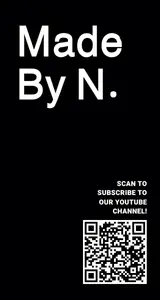The Stasheff Associahedra are a family of polytopes that seem to be ubiquitous, but in particular are strongly linked to associativity. Here are the first few:
The vertices of the -dimensional associahedron
are in bijection with bracketings of the word
, or equivalently, with the set of planar binary trees with
leaves. For example, there is a single way of bracketing the word
, and therefore,
is a single point. On the other hand, there are two ways of bracketing the word
. They are
and
. Correspondingly,
is an interval. Here are the first three associahedra with the labelling of their vertices by trees.
Loday pointed out a mysterious relationship between the trefoil knot and the -dimensional associahedron
. Namely, he showed that there is natural way in which the trefoil knot can be drawn on the surface of
. Here is a picture:
In order to make sense of this, note that the surface of the associahedron is built up out of squares and
pentagons. Furthermore
- Each edge of a square face is adjacent to a pentagon, and
- Two of the edges of a pentagon are adjacent to a square, whereas the other three are adjacent to other pentagons.
This allows us to construct a loop on the associahedron in the following way
- Start at the edge of a square and draw a path connecting the opposite edge. This edge is adjacent to a pentagon face.
- Draw a path on the pentagon to the other edge that is adjacent to a square face. This is unambiguous since there are only two such edges for each pentagon.
- Continue in this way, alternating between paths on squares and paths on pentagons.
At the end of this process you will have produced a loop which crossed each pentagon once and each square face twice, but in orthogonal directions. The only remaining thing to do is to resolve the crossings on the three square faces. Do this, alternating between over and under crossings, as in the picture. There are two ways to do this. Here is the other way:
It produces the mirror image trefoil knot.
All of this is actually easier to picture by taking the Poincare dual to the surface of the associahedron, giving a planar graph.
In this graph, each red dot corresponds to a pentagon face, each orange dot corresponds to a square face, and each blue edge corresponds to an edge on the associahedron. We can now draw the trefoil as a loop on the graph that visits each red dot once and each orange dot twice:
How to build the associahedron
We can now reverse engineer the process and come up with a nice way of building the associahedron, starting from the trefoil knot. Here are the steps:
1. Start with a trefoil knot and project it to the plane. This gives a graph with orange vertices
2. Add a red vertex to the centre of every edge
3. Now connect as many red vertices as possible by introducing new edges, but keeping the graph planar and without adding in new crossings.
This graph is actually the same as the previous one, namely
However, you need to view the graph as living on the two-dimensional sphere.
4. Finally, take the Poincare dual to obtain the associahedron.
.png)















